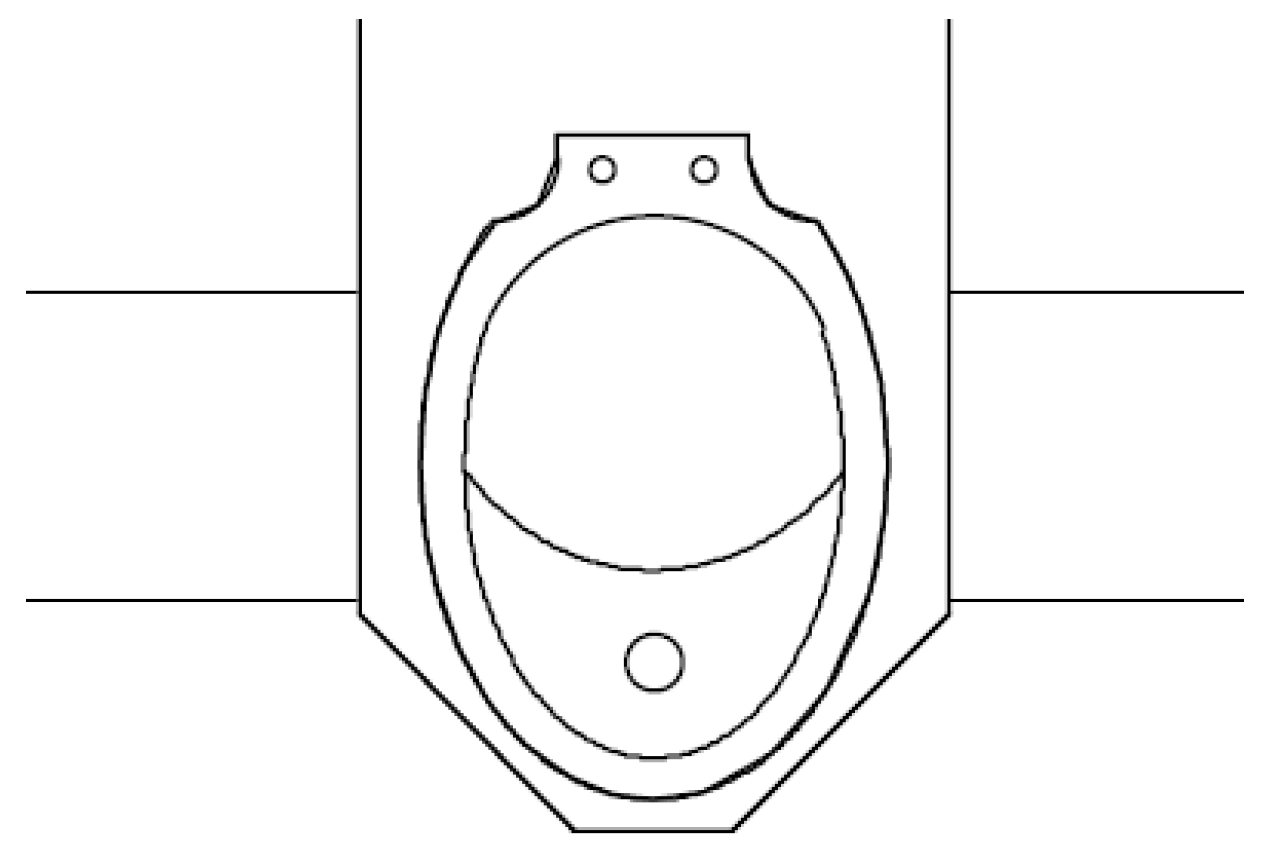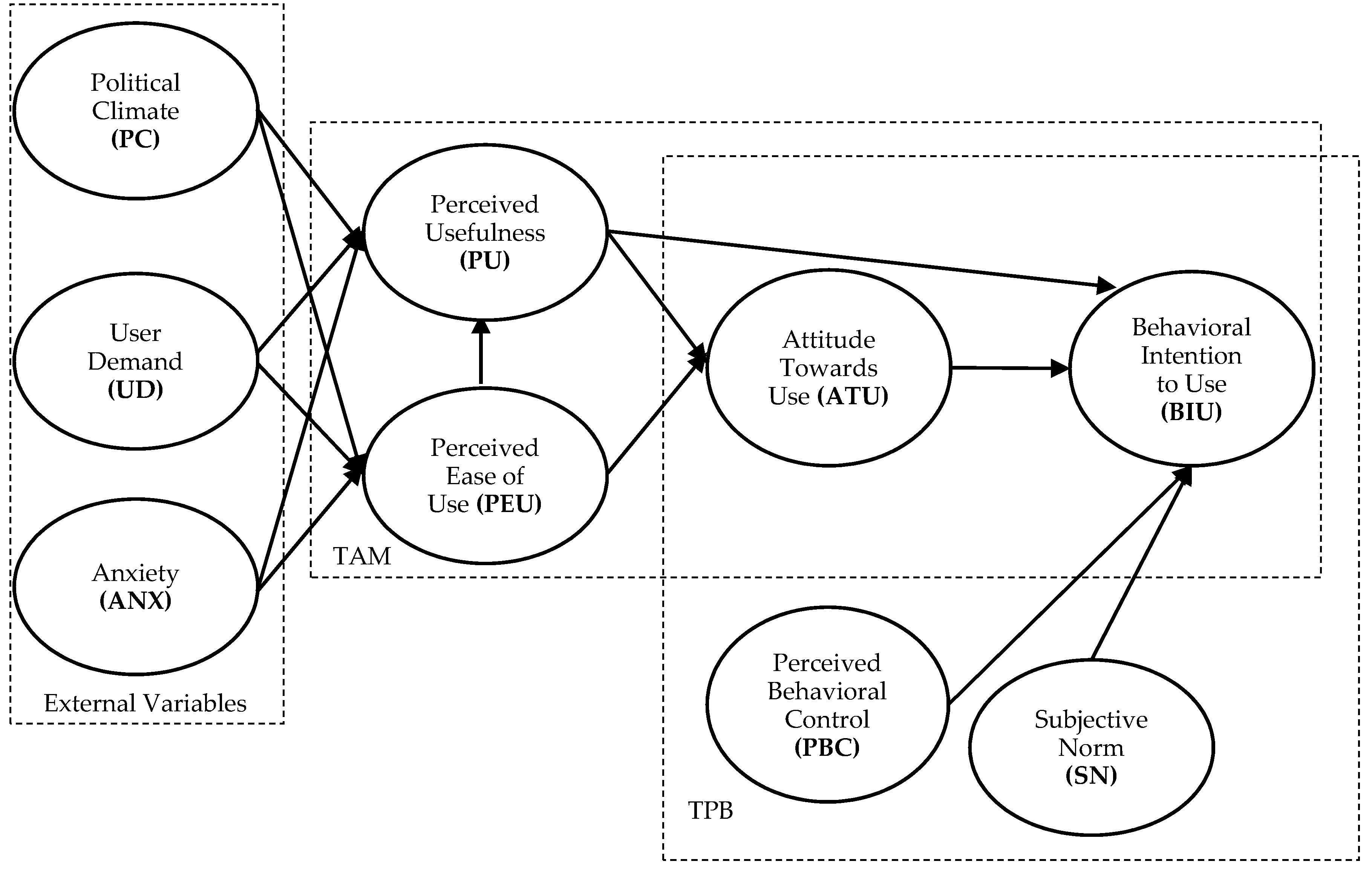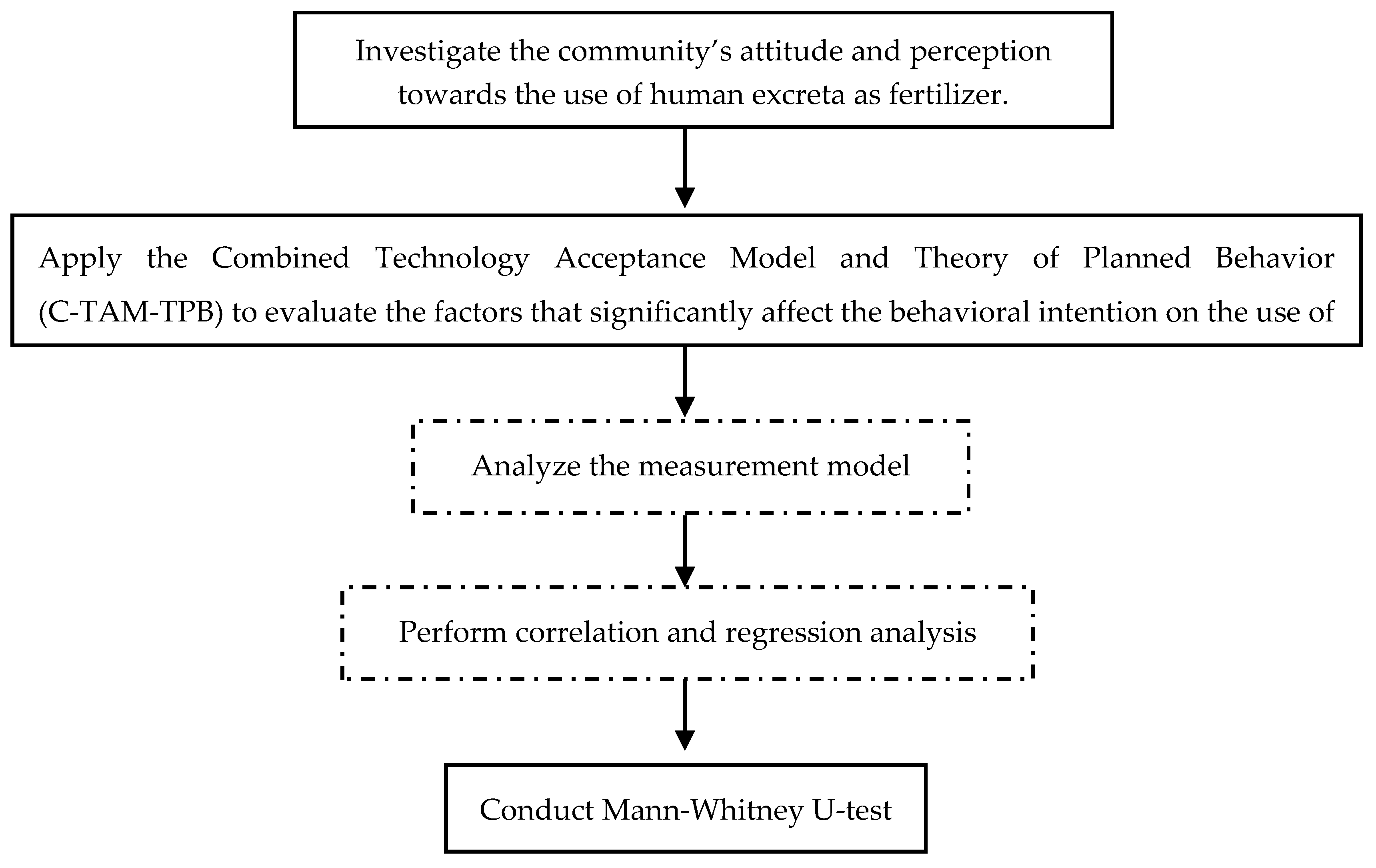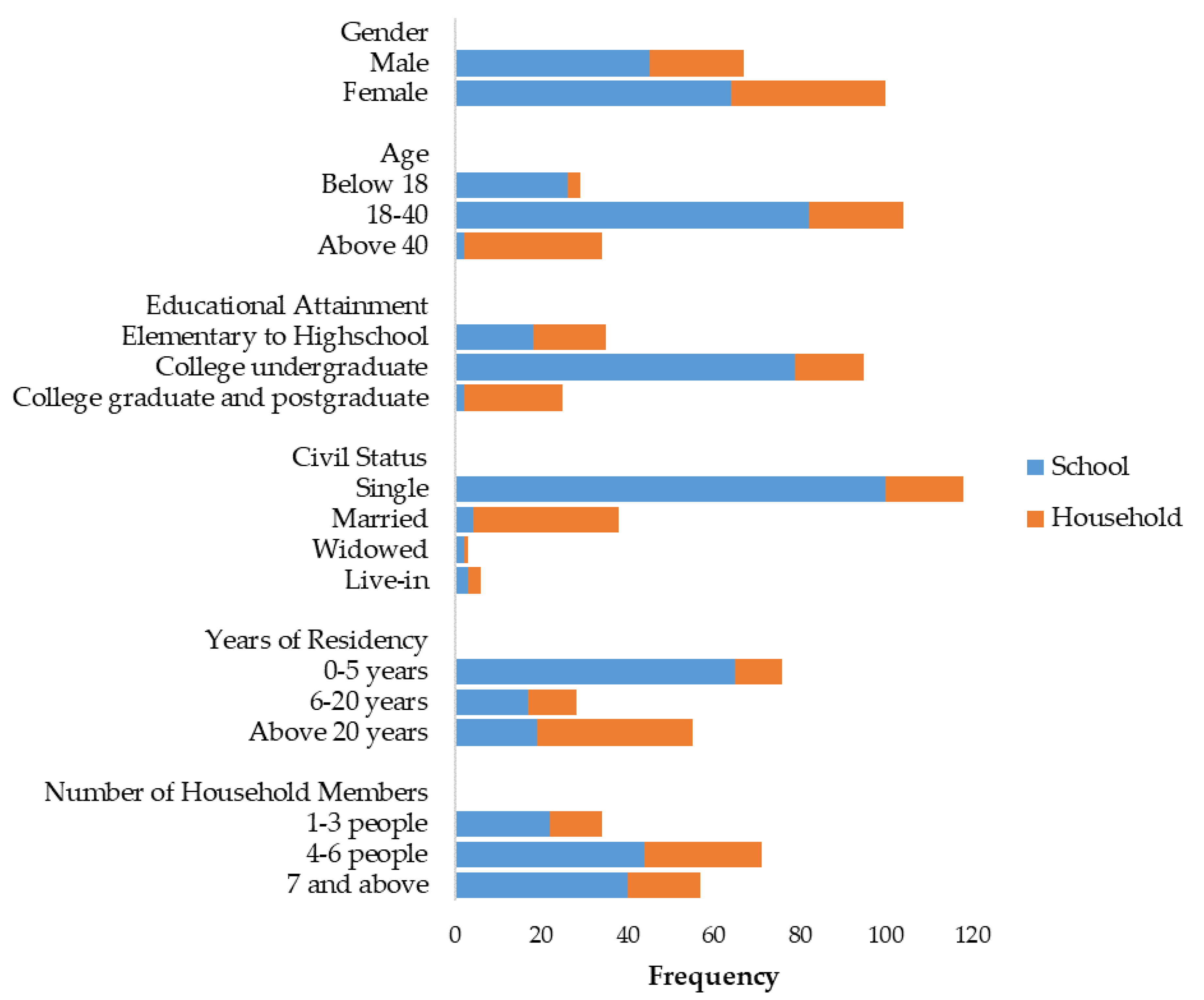1. Introduction
Poor sanitation is a global problem that results in one of the world’s burden of diseases (i.e., diarrhea) which account for more than 846,000 deaths annually [
1]. Although there is an increasing number of the global population who gained access to improved sanitation facilities in recent years, the challenge to provide access and better sanitation still remains for a greater share of 2.3 billion people, especially those located in the rural communities [
2].
In the Philippines, the proportion of the rural population provided with sanitary toilets is consistently progressing [
2,
3]; however, the proper treatment of domestic wastewater remains a problem with most of the installed toilets connected to septic tanks. While treatment is known to be less efficient with septic systems, poor maintenance and improper operation add to the problem. Discharges of effluents to the environment, whether intended or not, have already created health risks from polluting components (e.g., pathogens such as
Salmonella) carried by surface water flows, finding their way to the soil, surface water bodies and within aquifers [
4]. These cases are evident from the rise of cases of waterborne infections and diseases after major flood events in the country. In most dwelling units connected to a community water system, water is often used as the medium to carry wastes from a toilet system to a connected septic tank [
5]. While availability and access to freshwater and its affordability will likely favor water carriage systems, the water carriage approach remains difficult to communities, especially in rural areas, where availability of and access to water remains a big challenge. The demand of the growing Philippine rural population [
6] on water for toilet flushing and anal cleansing will continue to compete with the available clean water supply for food and drinking in the future, thus there is already a need for a more sustainable water and sanitation management in the country [
7].
One of the emerging paradigms that promotes sustainable water and sanitation management is called the source-separation sanitation system or coined as the Eco-Toilet System (ETS) [
8]. The ETS does not necessarily require water to flush and transport the excreta to the septic tanks, and some configurations do not allow water and soap. Some types of eco-toilets are built with separate drop holes for the urine and feces to allow source-separation of excreta. Urine and feces are collected separately, stored and treated for pathogens including viruses to produce safe fertilizers [
9]. Prior researches confirm that the ETS has the ability to close the loop of the material flow of the human excreta while preventing harmful discharges of effluents to the environment, conserving water consumption, and producing sanitized human excreta as fertilizers [
8,
9]. The technology acceptance of the ETS has appealed to many researchers because the development and implementation of the ETS still remain as a challenge [
10] that would require attitudinal and behavioral changes [
10,
11], additional cost for the infrastructure [
12], strong policy intervention, technical awareness, and sensitive environmental and hygiene initiatives [
11,
13,
14]. Shifting from the conventional toilet culture to waterless sanitation practices may cause some constraints to new users in the Philippines since majority of the Filipinos are “washers” in terms of anal cleansing [
5].
Perceptions and attitudes toward the ETS are recognized as important factors in addressing the different problems in sanitation. Shifting from a water-reliant system to a waterless and sustainable sanitation system involves numerous initiatives [
10,
11,
12,
13,
14]. For example, previous researches [
10,
12] draw more attention on the technology evaluation and economic viability, but not much on the perception. Other than the evaluation of effectiveness of the new sanitation technologies, some studies explore more decision-making techniques in evaluating the end-user responses towards the sanitation technology in terms of willingness to adopt and reuse ecological sanitation products [
15].
Although the principles of the ETS are not entirely novel, such sanitation system is perceived as a new environmental technology [
16]. The ETS is not always socially accepted in some communities since “flush and discharge” type became the norm, like in the Philippines. Previous investigations have implemented diverse approaches to model and understand the social perceptions and attitudes towards acceptance of the ETS such as hypothesis testing [
14], value-belief-norm theory [
15], and theory of planned behavior (TPB) [
17]. However, these approaches are only limited to the communities’ perspectives based on their available resources, social influences, skills, and opportunities and not on how they perceive the use of the technology. One of the widely used acceptance models to address this gap is the Technology Acceptance Model (TAM). TAM was initially used as an acceptance model for new information technology systems, and has been recently recognized as one of the most powerful tools of explaining the users’ behavioral intentions in using and accepting new technologies [
18,
19]. TAM was formulated to explain the users’ perception in adopting new technology, i.e., it may be influenced by different factors such as perceived usefulness and perceived ease of use of the technology, attitude, and behavioral intention [
19].
This study aims to explain not only the technology use through TAM but also how the community thinks towards the ETS based on their perceived behavioral control (or facilitation conditions) and subjective norms, in which TPB is capable of explaining [
20]. An integrated TAM and TPB to evaluate potential users’ perceptions and attitudes toward the ETS in rural areas is proposed. This methodology allows us to determine how technology adoption in particular to eco-toilet systems is affected by the perception on technology use, perceived behavioral control, and subjective norms. The integrated theory of TAM and TPB has already been explored to analyze projects that promote sustainable development such as green transportation [
21] but not on sanitation.
This study also focuses on the behavioral intention as the measurement of social perception towards the use of the ETS in a rural community in the Philippines. The study area is situated in Mulanay, a rural municipality in Quezon Province, where the concept of the eco-toilet is recently introduced. Based on the 2014 statistics from the rapid community-based monitoring system (RCBMS) of Mulanay, about 46% of the total municipality population has no access to sanitary toilet facilities and 83% are at risk of unsafe water supply.
The rest of this paper is organized as follows. The next section gives a detailed description of the methodology.
Section 3 discusses the results from a case study in Mulanay, Quezon. Finally, conclusions and recommendations for future work are given.
2. Methodology
2.1. Public Orientation to the ETS
The eco-toilet system was introduced to the community through a consultation meeting with the stakeholders and project presentation in the pilot sites (e.g., in Mulanay). This was conducted to present the concept of the ETS project that will be initiated in the rural area, as well as to enhance the awareness thereof. The eco-toilet that was introduced to the community was a urine-diverting type. This type of ETS has the ability to safely collect and process excreta (urine and feces) with compost additives into liquid and soil conditioners through aerobic decomposition. The main components of the ETS are: (1) superstructure, (2) urine diverting toilet (as illustrated in
Figure 1), (3) collection chamber, (4) collection tank for urine, and (5) compost mixer. The superstructure is the main building structure of the ETS facility. This serves as the shelter and provides the privacy for the users. The superstructure also holds the collection chamber. The urine-diverting toilet is designed to separate urine and feces that occurs at the commode. The urine diverter is connected to a collection tank located in the collection chamber, while the feces drop hole is centered beneath the compost mixer. Foul odors are prevented by tightly closing the urine collection tank and by frequently mixing the feces with locally available dehydrating materials such as rice hull. Further details are explained elsewhere [
22,
23]. The urine and compost products were processed onsite until they were ready and safe for agricultural use.
Finally, the public orientation was also executed to clarify the roles and responsibilities of the implementers and the adopters once the ETS units are already installed. Further, this activity was also facilitated to get the public’s opinion about the ETS.
2.2. Technology Acceptance Model
Technology Acceptance Model (TAM) was originally introduced by Davis in 1989 to understand and provide explanation on the decision factors of the users on accepting new information technology systems [
20]. This model assumes that the technology adoption is directly affected by the users’ behavioral intention (BIU). BIU is a variable that predicts how the users intentionally engage in the adoption or actual use of a new technology (i.e., to adopt or not to adopt a new system). This decision factor is influenced by both perceived usefulness (PU) and attitude towards the use (ATU) of the new technology. PU refers to the belief of the users that using the new technology would improve the performance on a certain task. On the other hand, ATU pertains to the emotional judgment of the users on the idea of performing a certain behavior or task. The TAM also considers two major constructs that directly affect ATU. The first construct is the PU and the second is the perceived ease of use (PEU). The latter refers to the convenience and effortlessness of using the new technology. PEU also directly affects the PU of the new technology [
24].
2.3. Theory of Planned Behavior
Theory of Planned Behavior (TPB) was initiated by Ajzen [
20] to provide explanation on how behavioral intention (BIU) is influenced by the subjective norms (SN), perceived behavioral control (PBC), and ATU. SN is a measurement variable that describes how important individuals or groups favor or not favor the users’ usage of the new technology. In other words, the users’ decision towards usage of a technology or system depends on social influences. Another construct that is directly associated to the BIU is the PBC. The PBC refers to the resources (i.e., skills, experiences, money), and opportunities that enable the users to perform a behavior. The TPB assumes that sufficiency in the resources and opportunities would less hinder technology adoption and would increase the PBC of the users. ATU, in PBC, is similar to its definition in TAM [
21].
2.4. The Proposed Combined Technology Acceptance Model and Theory of Planned Behavior (C-TAM-TPB) Model and Research Hypotheses
TAM and TPB differ in several ways. Firstly, the assumption of TAM is that the perception on usefulness and ease of use of a new technology primarily determines the decision of a user to intentionally adopt or use a technology or system; while TPB assumes that decision to use or adopt a technology or system requires relevant references such as outcomes based on experiences of another individual or group, subjective preferences of other groups, and control variables (i.e., skills, resources, opportunities). Secondly, unlike TPB, TAM assumes that decision to use or adopt a new technology or system is not directly affected by any social influences. Lastly, the predictors of behavior in TAM may be affected by external variables (i.e., political climate (PC), user demand (UD), and anxiety (ANX)), while TPB treats the variables independently [
21,
25,
26].
C-TAM-TPB was initially developed by Taylor and Todd [
27] to bridge the gap between the TAM and TPB. Although TAM has the ability to predict the BIU of the users of a new technology, it misses out two important factors in elucidating BIU which are the SN and PBC. Both TAM and TPB have the same objective on anticipating the users’ BIU [
21]. Combining the two models makes a more dynamic approach in explaining the BIU [
25].
Based on the proposed C-TAM-TPB model, the constructs such as PU, ATU, SN, and PBC were hypothesized predictors of the users’ BIU of the ETS. Chen et al. [
25] used a similar framework of C-TAM-TPB. However, in this paper, the PU and PEU were hypothesized to be affected by external variables (See
Figure 2). Hence, the model included PC, UD, and ANX as external variables resulting to the following thirteen hypotheses (
H):
Hypothesis 1 (H1). PU directly affects the BIU of the user of the ETS;
Hypothesis 2 (H2). ATU is directly associated to the BIU of the user of the ETS;
Hypothesis 3 (H3). PBC directly affects the BIU of the user of the ETS;
Hypothesis 4 (H4). SN is directly associated to the BIU of the user of the ETS.
Hypothesis 5 (H5). PEU directly affects ATU of the ETS;
Hypothesis 6 (H6). PU has a direct effect to ATU of the ETS;
Hypothesis 7 (H7). PEU directly affects the PU of the ETS;
Hypothesis 8 (H8). PC has a direct effect to the PU of the ETS;
Hypothesis 9 (H9). UD is directly associated to the PU of the ETS;
Hypothesis 10 (H10). ANX directly affects PU of the ETS;
Hypothesis 11 (H11). The PC has a direct effect to the PEU of the ETS;
Hypothesis 12 (H12). UD is directly associated to the PEU of the ETS;
Hypothesis 13 (H13). ANX directly affects PEU of the ETS
The hypotheses were based on the path of the model as shown in
Figure 2. The path of the research model indicates that PU and PEU were two precursors of the users’ attitude. The effects of the external variables were mediated by PU and PEU; PEU may also have direct association with PU. Furthermore, PU, ATU of ETS, PBC, and SN may also have a direct effect to the behavioral intention to use of the ETS. These hypotheses were investigated by conducting a structured survey and data processing. The details of process are discussed further in the succeeding sections of this paper.
2.5. Survey Instrument
The survey questionnaire consisted of four sections: (1) consent form and declaration if the respondent is illiterate (with approval from the Research Ethics Office of De La Salle University, Manila); (2) demographic profile of the respondents: gender, age, educational attainment, civil status, years of residency, and number of household members; (3) items investigating community’s perceptions and attitudes in using human excreta, with questions about the factors that would encourage and discourage users to install the ETS (see
Table 1); and (4) adopted C-TAM-TPB questionnaire to evaluate the predictors of the behavioral intention of the rural community to use the ETS (see
Table 2). Items listed in
Table 2 were scored by the respondents on a five-point scale where 1 indicates strong disagreement, 2 for moderate disagreement, 3 for neutral/undecided, 4 for moderate agreement, and 5 for strong agreement. The questionnaire was also translated in Filipino language, the vernacular used in the community.
2.6. Study Area and Data Collection
The study was conducted in Mulanay, a municipality in the third District of Quezon Province (also known as Bondoc Peninsula). The area is located on the coordinates of 13°31′20′′ longitude and 122°24′15′′ latitude. The municipality is about 279-kilometer south-east of Metro Manila and 142 km away from its provincial capital, Lucena City. Mulanay is divided into 28 barangays. Out of 53,123 people from all the barangays of Mulanay [
28], 46% do not have access to basic sanitary facilities.
For this research, two community groups were identified: school and household community groups, representing the perception on public-shared and household-shared ETS, respectively. The respondents representing the household community (59 participants) included leaders or representatives from barangays of Mulanay, Local Government Unit (LGU) leaders, and household representatives from an ETS pilot site in a settlement village. On the other hand, the respondents representing the school community (137 participants) included students and faculty members from an ETS pilot site in an agricultural university. Two ETS units were deployed for each study community.
2.7. Data Analysis
The data collected from the respondents were analyzed using Statistical Package for the Social Sciences (SPSS) ver. 16 (SPSS Inc., Chicago, IL, USA). The steps for data analysis were as follows (see
Figure 3):
Step 1: Investigate the community’s attitude and perception towards the use of human excreta.
The attitude and perception of the Mulanay community towards the use of human excreta were examined using six (6) nominal questions about their awareness of the nutrient value of human excreta, perception of human excreta as safe or unsafe as fertilizer, preference of use of human excreta, and willingness to collect the urine and feces. Descriptive statistics were generated then correlations between nominal data sets were evaluated by Chi-square test.
Step 2: Apply the Combined Technology Acceptance Model and Theory of Planned Behavior (C-TAM-TPB) to evaluate the factors that significantly affect the behavioral intention to the use of the ETS.
Step 2a: Analyze the measurement item
The internal validity and reliability of measurement items of the constructs were analyzed by applying factor loading and Cronbach’s alpha reliability test [
21]. Cronbach’s alpha is mathematically presented in Equation (1), where
is the total number of items,
is the average inter-item covariance of the items, and
is the average variance. All factors with insignificant factor loading and low Cronbach’s α < 0.50) were eliminated.
Step 2b: Perform correlation and multiple linear regression analysis
Correlation and multiple linear regression analyses were carried out to elucidate the relationships of the constructs with each other. The correlation analysis was first performed before the regression analysis. In the correlation analysis, the direction and strength of the association of each hypothesized construct to the dependent variable were quantified. Correlation coefficients, denoted by “r,” ranged from +1.0 to −1.0. Values of r greater than 0 but less than +1.0 indicate positive linear association while values of r less than 0 but greater than −1.0 indicate negative linear association. On the other hand, r = 0 indicate no linear association with the dependent variable. In the multiple linear regression analysis, hypothesized predictors with significant correlation per dependent variable were investigated. Predictors with p-values higher than the threshold value of 0.05 were considered insignificant. Effects of significant predictors were assessed in terms of computed unstandardized (B) or standardized (β) coefficients. Coefficient of determination, R-squared was computed to quantify the explanatory power of the multiple linear model.
In this study, the C-TAM-TPB model has more than one dependent variable. Therefore, four multiple linear regression analyses were performed to model the following dependent variables: BIU, ATU, PU, and PEU; in terms of their corresponding hypothesized predictors as mathematically presented in Equations (2)–(5), where B
o is the intercept, B
Hi is the estimates of the unstandardized coefficients in connection to hypothesis Hi, and
is the random error:
Step 3: Mann-Whitney U-Test
The Mann-Whitney U-test was performed to compare rank data between two groups (e.g., the difference of responses to constructs between people who are aware and unaware of the nutrient value of the human excreta).















